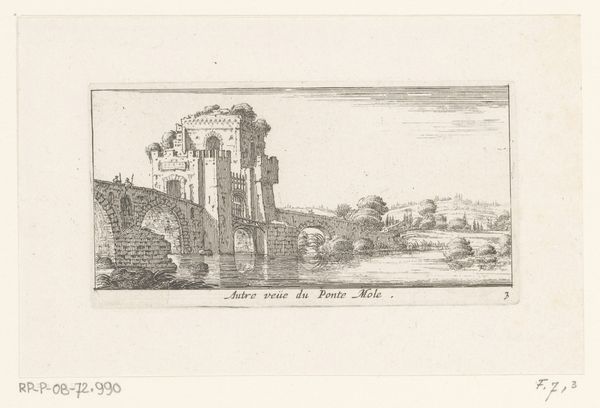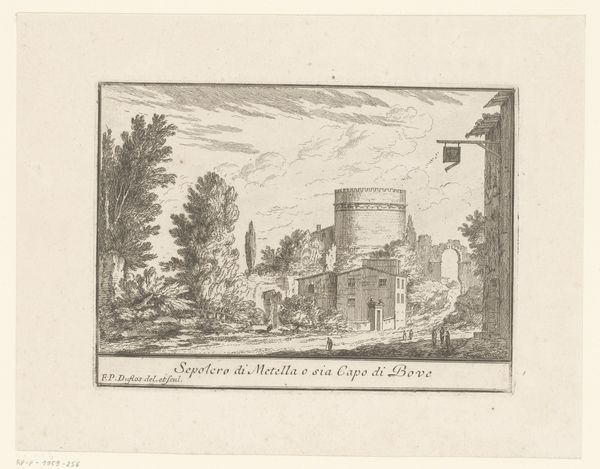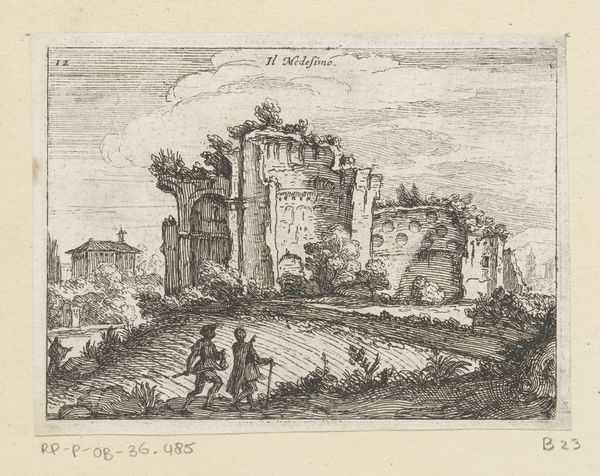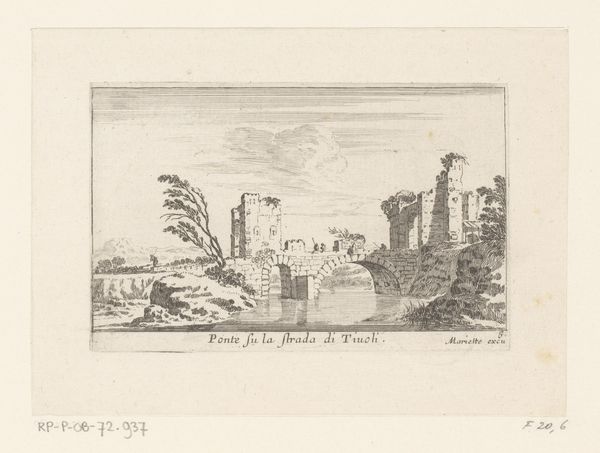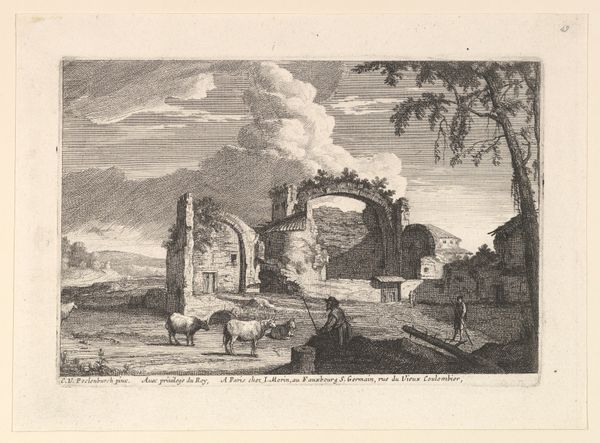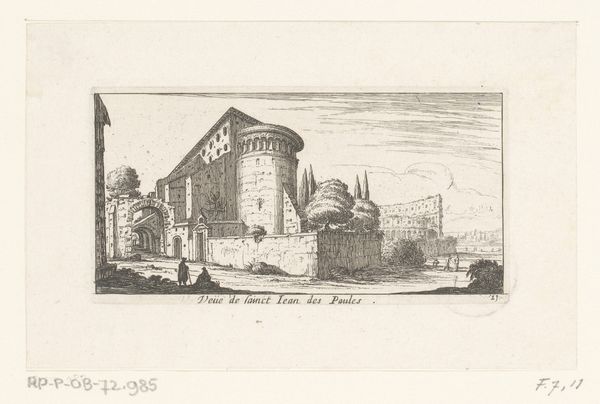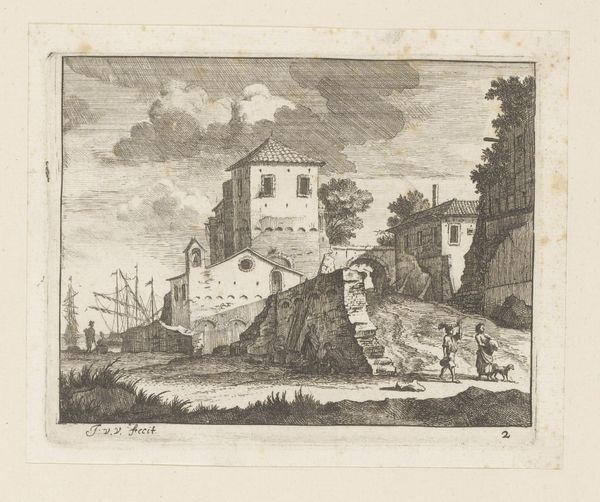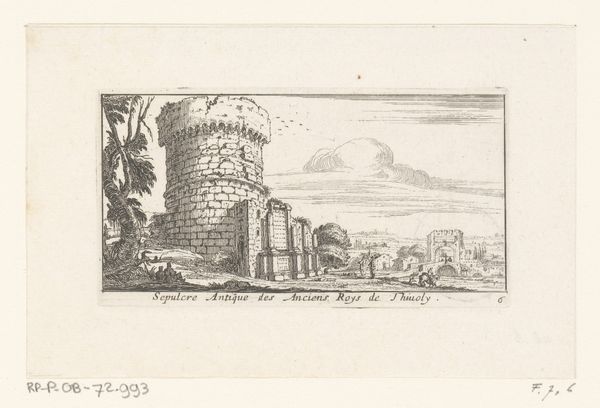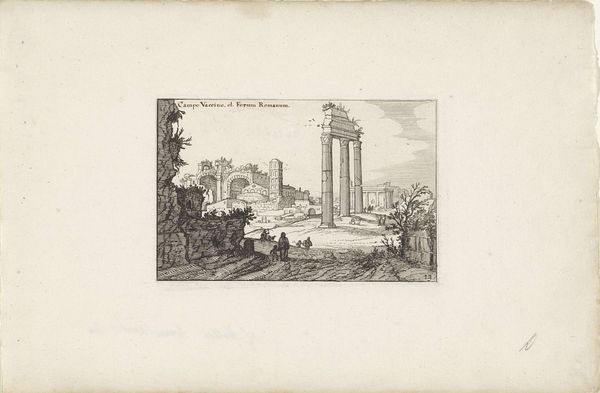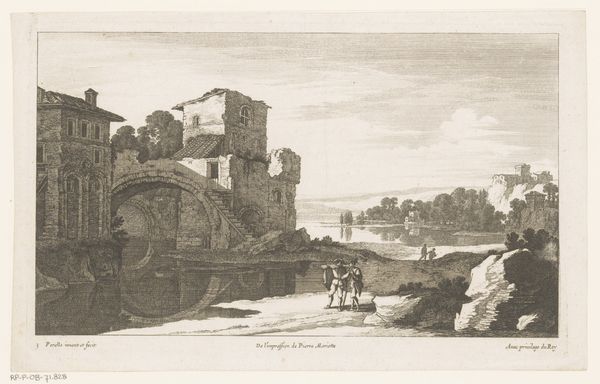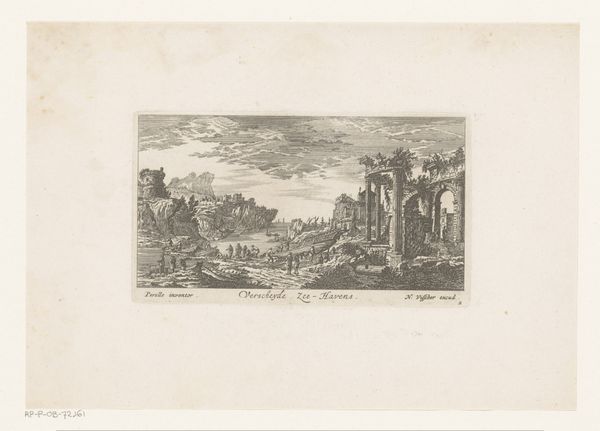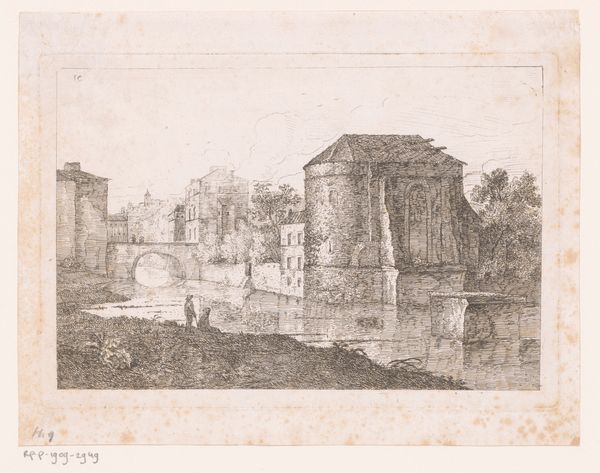
print, etching
#
baroque
# print
#
etching
#
landscape
#
cityscape
#
history-painting
Dimensions: height 59 mm, width 115 mm
Copyright: Rijks Museum: Open Domain
Editor: Here we have "View of Rome with the Milvian Bridge," an etching by Israel Silvestre, dating from 1636 to 1661. I'm struck by how the bridge and towers dominate the foreground, framing the distant cityscape. What structural elements do you find most compelling? Curator: The formal organization certainly merits attention. Observe the artist's calculated use of line to establish depth and perspective. The dense hatching employed to render the tower's stone contrasts sharply with the delicate strokes defining the Roman skyline. This visual tension draws the eye across the composition. Editor: I see what you mean. The hatching really creates a sense of weight and solidity in the foreground. Does that contrast serve any particular compositional purpose? Curator: Indeed. Note how Silvestre manipulates textural contrasts to guide our gaze. The rough, assertive lines of the tower complex compete for our attention with the serene, open expanse of the city beyond. This juxtaposition creates a visual rhythm, animating the image and underscoring the relationship between the immediate and the distant, the tangible and the conceptual. Editor: That makes a lot of sense. It’s like a dialogue between the rough textures up close and the smooth, distant cityscape. I hadn’t noticed how much the artist was playing with that contrast before. Thanks for pointing that out! Curator: The strategic employment of visual language enables the artist to articulate both spatial and thematic concerns, achieving an intricate harmony between form and content.
Comments
No comments
Be the first to comment and join the conversation on the ultimate creative platform.
